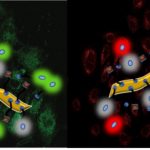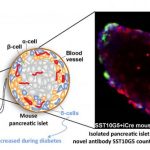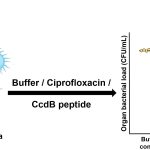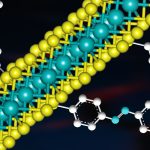
(Image courtesy: Mrinmoy De)
Researchers from the Department of Organic Chemistry and Department of Molecular Reproduction, Development and Genetics in IISc have developed an optical nanosheet sensor to identify disease-causing microbes from urine samples.
Optical sensors are faster and simpler than culture-based methods and PCR. Nanosheet sensors such as those made of Graphene Oxide (GO) have a high surface area to volume ratio, but have been largely unsuitable for biological applications so far because of their poor stability in aqueous media such as urine or blood.
To overcome these limitations, the researchers led by Mrinmoy De designed chemically modified Molybdenum Disulfide nanosheets, which are water soluble and positively charged, and bind to the negatively-charged cell membrane of microbes. They coupled Green Fluorescent Protein (GFP) to the nanosheet to visualise the interaction between the microbe and the nanosheets.
The difference in intensity of the GFP signal after adding the microbe sample was used to differentiate bacterial strains. In addition, the sensor can be used to identify whether the strain is resistant to antibiotics or not. The researchers say that the sensor can be also used to study the effect of drugs on diseased cells.






